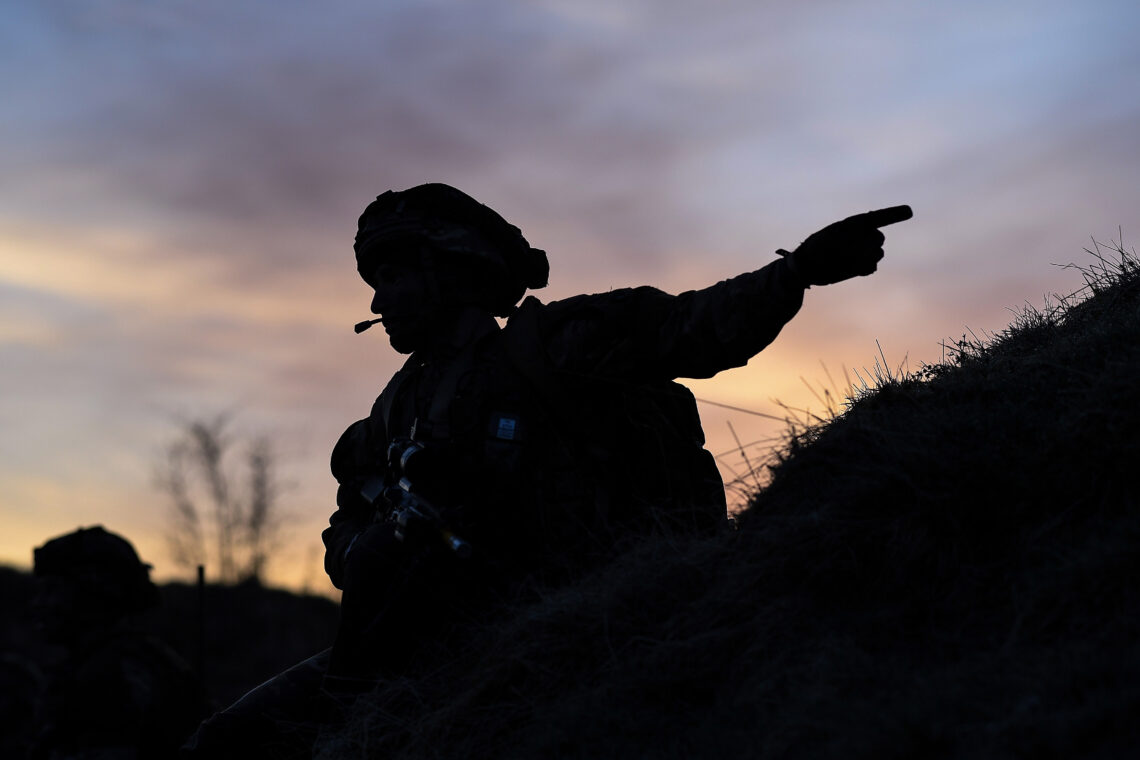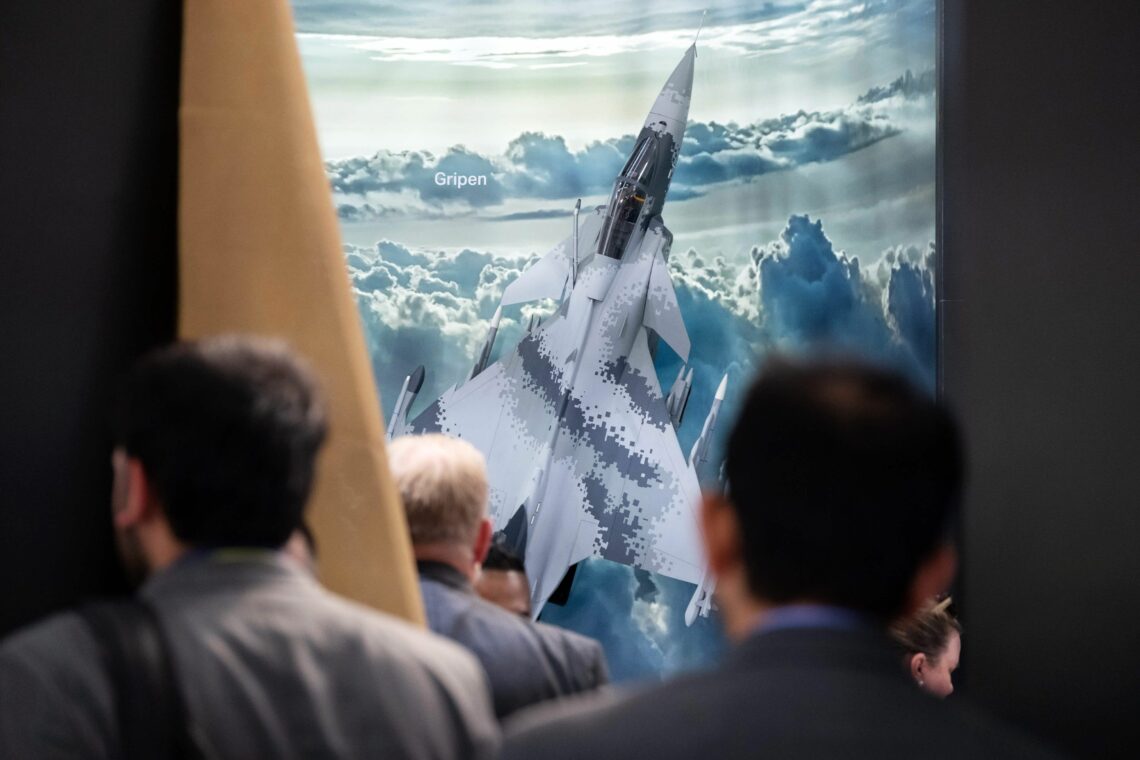Sweden and Finland in a mutual defense pact
After undergoing a near-total disarmament after the Cold War, Sweden is remilitarizing in close collaboration with Finland. The mutual defense pact could eventually be integrated into NATO, although such a course of action would certainly provoke a reaction from the Kremlin.

In a nutshell
- Swedish-Finnish military cooperation is intensifying
- Sweden is struggling to finance its rearmament
- The two could join NATO or work more closely with the alliance
The rapid deterioration in relations between Russia and NATO has gone hand in hand with increasingly assertive Russian behavior in the Baltic Sea region. Neighboring countries have been subjected to a range of hostile actions, from bellicose political statements to military maneuvers in border areas and violations of national airspaces. Responses to the Kremlin’s provocations could result in a transformation of the region’s security architecture.
Neutral states
During the Cold War, the Soviet Union controlled the eastern shores of the Baltic Sea, including Poland and the three Baltic states. The integration of those states into the Western alliance was a serious blow to the Russian security situation. NATO aviation and ground troops were suddenly stationed very close to the St. Petersburg region. The saving grace, from a Russian perspective, was that Finland and Sweden remained neutral.
Sweden has embarked on a program of major rearmament.
The strategic implications of this neutrality were considerable. In the case of Russian military aggression against Estonia, for example, it would be impossible for NATO to come to the rescue in time. The northern flank of the transatlantic alliance also remained vulnerable, as a determined push through Finland and Sweden could result in a swift Russian seizure of the northern coast of Norway. In the latter case, Russian air and naval assets could gain control over the approaches to the Northern Atlantic, placing the United States Navy at a serious disadvantage.
Recent developments suggest that Russia may be about to squander those important strategic assets. If Sweden and Finland come together in a mutual defense pact, they could swiftly and seamlessly integrate NATO. Russia would face a new security challenge on par with or even more considerable than the inclusion of the three Baltic states into the Western alliance.
Swedish rearmament
Sweden has embarked on a program of major rearmament, coupled with deepening military cooperation with Finland and NATO. A prime example is the Arctic Challenge Exercise. Staged every two years by Sweden, Finland, and Norway, it has become one of the largest live air-power exercises in Europe, with air forces from several NATO countries participating. Other examples have included Finland and Sweden taking part in major NATO exercises like Trident Juncture and Cold Response, both staged in northern Norway, and Northern Coasts, a naval drill staged in the southern Baltic in 2019.
A watershed event took place in 2017 when Sweden staged the Aurora-17 war games. It was the country’s largest military exercise in 23 years, involving forces from several NATO countries. The implied message was that in case of military aggression from Russia, Sweden would stand ready to receive swift reinforcement from NATO. In March 2019, Sweden also invited Finland, Norway, the U.S. and the United Kingdom to take part in Northern Wind, a major ground forces winter exercise in the Arctic region. Its ambition to stage a second Aurora exercise in 2020 had to be postponed because of the pandemic.
Common heritage
The main argument in favor of Sweden and Finland coming together in a mutual defense pact is that the two nations were once a single state. Their common heritage is strong, as is mutual trade and cultural exchange. Both have large minorities from the other side, and there is considerable intermarriage. The main counterargument is that more recent historical legacies also play into the picture, creating tensions that may derail joint ambitions. Among older Finns, there are lingering resentments over how Sweden failed to come to the rescue when Finland was attacked by Stalin during the Winter War. But greater significance must be attached to the Cold War legacies of the two countries.
The near eradication of Swedish territorial defense created a gray zone in the Baltic Sea region.
While Finland was locked into a Treaty of Friendship with the Soviet Union, which constrained its room for foreign policy maneuvers, Sweden was free to embark on a high-profile policy of neutrality that combined a powerful military force (clandestinely cooperating with NATO) with an equally powerful pacifist streak in foreign policy. Its grandstanding about representing a “third way” included commitment to nuclear disarmament and proposals to create a nuclear-free zone in the Nordic region.
The consequences of these fundamental historical disparities came to the fore when the Soviet Union collapsed, and the two neighbors were free to chart a common course. The outcome was profound divergence. Finland maintained its defensive posture, retained conscription and ensured it would be capable of fielding large armed forces, including a substantial component of artillery. Sweden, in contrast, scrapped its policy of territorial defense, abolished conscription and downsized its military to the point where territorial defense would be possible in a limited region only, and for no more than a week.
The near eradication of Swedish territorial defense created a gray zone in the Baltic Sea region. By signaling to Russia that it would not be able to intervene in a regional military conflict, it not only placed Estonia at greater risk, but deprived Finland of crucial support, enhancing its vulnerability. Swedish defense planning, meanwhile, counted on Finland to act as a defensive shield against potential Russian aggression, causing more resentment. When Sweden finally began rebuilding a credible territorial defense, it faced an uphill battle. An important consequence of its prior near-total disarmament was that the implied costs of rebuilding were simply staggering. Joining hands with neighboring countries to procure and develop military equipment was an absolute necessity.

Joint measures
A first step towards Nordic defense cooperation was taken in June 2008, with a joint study titled Nordic Supportive Defense Structures. Jolted by the war between Russia and Georgia in August, in November the Nordic ministers of defense reached an agreement on increased cooperation. At a ministerial meeting in Helsinki in November 2009, a decision was taken to gather all common efforts under the Nordic Defense Cooperation format.
Sweden’s failed ambition to export its own multirole Saab JAS 39 Gripen fighter plane complicated matters. Finland had already purchased the American F-18 Hornet, and in 2008 Norway decided in favor of the American F-16 Fighting Falcon. Bad blood between Sweden and Norway contributed to the breakdown of two joint defense projects – the self-propelled “Archer” artillery system and the development of heavy trucks.
Both projects collapsed toward the end of 2012, causing the Swedish parliament to engage in fierce discussions about the implications for further defense funding. Having been deprived of expected savings in development costs, Swedish defense planners faced an even tougher challenge to win political support for a massive increase in expenditure. The failure to export the Gripen fighter plane was a serious setback, causing a steep rise in the cost of procurement for the Swedish Air Force.
The effort to achieve deeper relations between Sweden and Finland has proved highly successful.
In contrast, the effort to achieve deeper relations between Sweden and Finland has proved highly successful. In the wake of Russia’s aggression against Ukraine, the two sides agreed on a road map for enhanced defense cooperation. In the spring of 2018, they signed an agreement with the U.S. that included an important clause on “host nation support,” meaning they would be prepared to receive speedy U.S. reinforcements.
These developments were followed by a comprehensive agreement between the Swedish and Finnish defense ministers on far-reaching defense cooperation, including giving military units access to neighboring territory and the creation of conditions for common military actions. In 2020, the Swedish parliament finally broke a long-standing taboo: authorizing the government to provide military support for Finland if its territory is violated, and to receive assistance from Finland in the event of a similar situation in Sweden. However, while Sweden will be ready to accept military support from Finland in case of an armed invasion, it will be up to the Swedish parliament to decide if it is ready to do the same for Finland.
Scenarios
A first scenario is that the two sides will file a formal application for membership in NATO. Given that they have over the years alternated in the role of what is known in NATO jargon as “Partner Number One,” the outcome would be a foregone conclusion. Both would be found, very quickly, to live up to all requirements for membership. The respective military leaderships may also be assumed to have made all the necessary preparations for taking this step.
What speaks against this outcome is that in the case of armed Russian aggression against Finland, Sweden would be treaty-bound to come to the rescue. The controversial issue of a “NATO option” illustrates that antipathy toward NATO and the U.S. remains powerful in large segments of the Swedish political landscape.
Recognizing that most of its population is against membership in NATO, Finland has opted to declare that its defense forces will be kept in a state that makes a rapid entry into NATO possible. In December 2020, a majority in the Swedish parliament adopted a resolution that Sweden should follow the same path. But in its foreign policy declaration in February 2021, the government did not even mention the issue.
The alternative scenario is that Sweden and Finland will continue on the path of deepening mutual defense cooperation, in ever-closer cooperation with NATO. In October 2020, the Swedish Air Force again took part in the Finnish annual Ruska air force exercise. The Arctic Challenge Exercise 2021 was the fifth of its kind, involving over 70 aircraft and more than 3,000 personnel from eight nations. And in May-June 2021, a Swedish contingent took part in Finland’s Northern Forest ground forces exercise.
The main difference between the two scenarios is that filing a formal application for membership in NATO would openly provoke the Kremlin. Russia’s response could entail a variety of “active measures” to destabilize the security situation in the region, including aggressive moves against the Baltic states. By proceeding gradually and continuing to cooperate with NATO, Helsinki and Stockholm may achieve the same military effect while containing the political risk.
The strength of this common commitment will be put to the test with Finland’s imminent decision on a replacement for the aging F-18 Hornets, a deal worth 10 billion euros. If it decides in favor of JAS 39 Gripen, it will send a strong signal that the two countries are coming together. If it opts for a new generation of F-18 Hornets, as is more likely, or other NATO aircraft, it will throw a spanner into the works. In addition to the implied rebuff, Swedish defense planners would have to cope with a major loss in financing they hoped to gain for their own rearmament.







